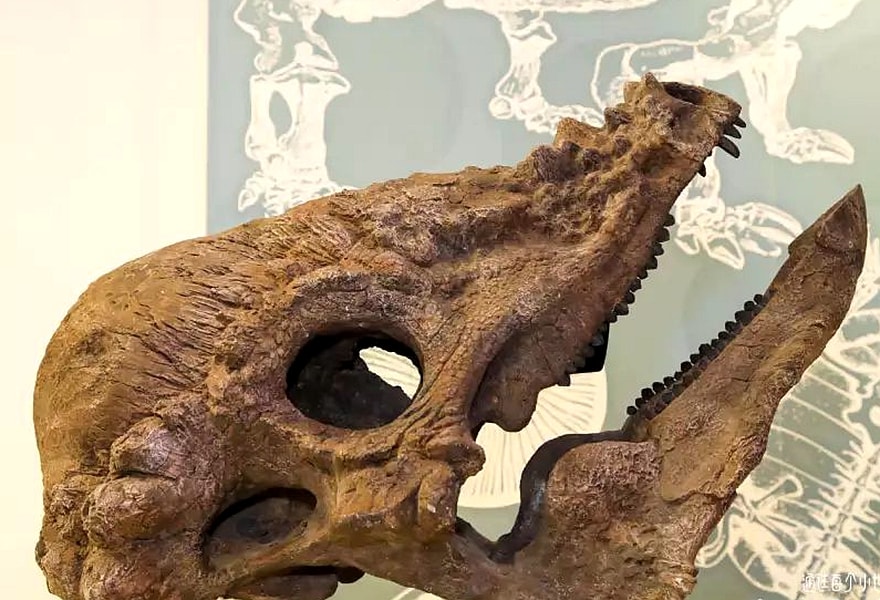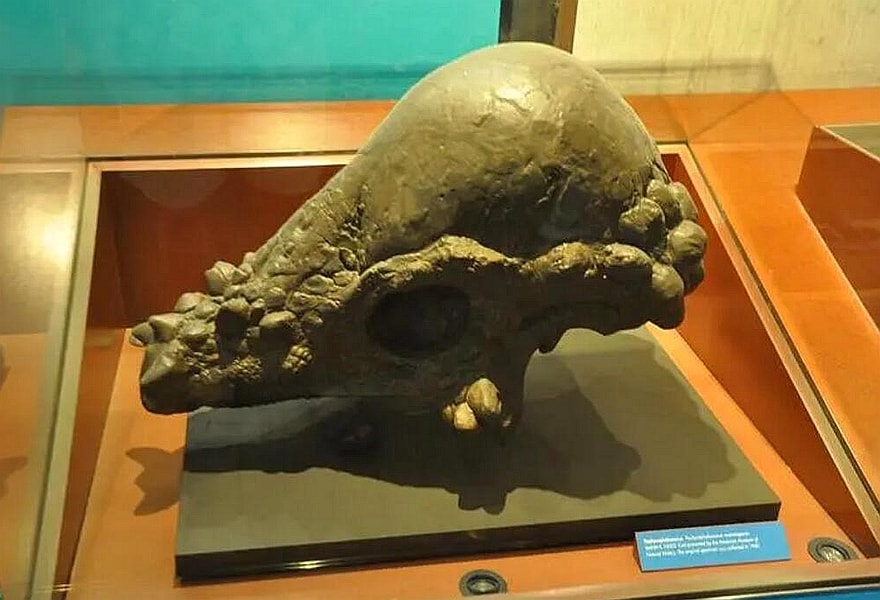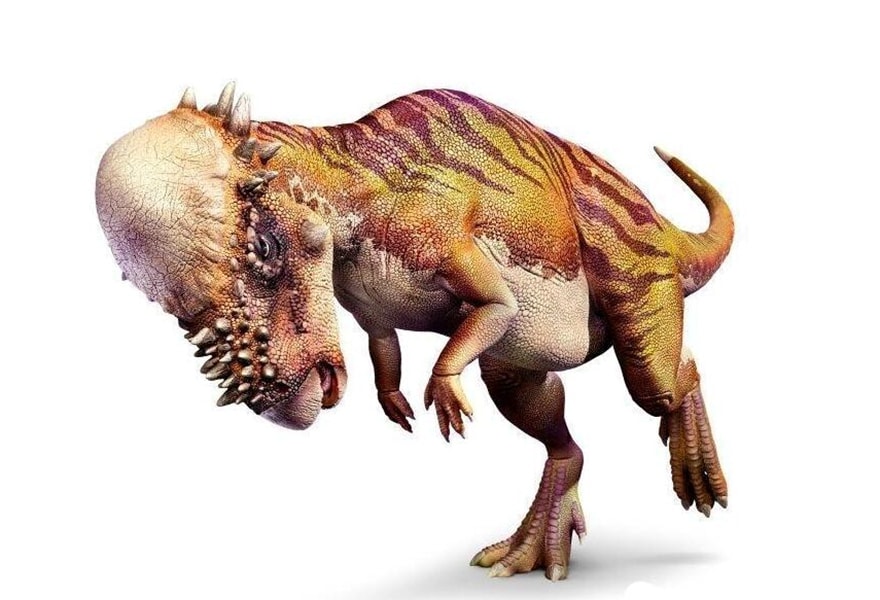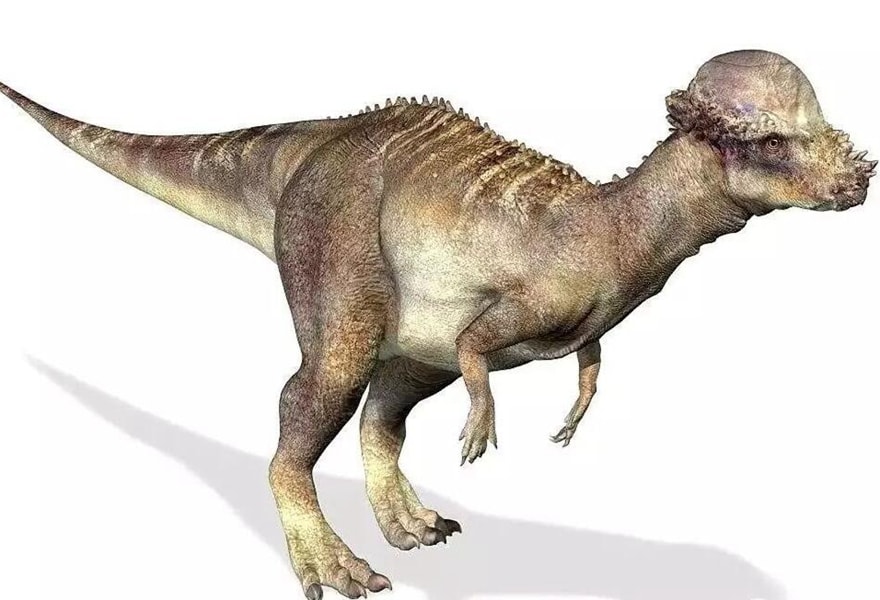Dinosaur Encyclopedia
Helmet-Wearing Dinosaur – Pachycephalosaurus
Morphological Features of Pachycephalosaurus
The Pachycephalosaurus, or the “thick-headed lizard,” is covered with bony bumps around its head and the tip of its nose. Some individuals have large and sharp spikes at the back of their heads. Although it has small yet sharp teeth, its skull is covered with a 23-centimeter-thick bony plate. The back of the skull is adorned with protruding structures, with some spike-like projections reaching up to 13 centimeters. The Pachycephalosaurus is approximately 4.5 meters in length. It has a short and stout neck, short forelimbs, long hind limbs, and a relatively small body. The tail, made of rigid bony structures, is likely quite heavy.


>>>Dinosaur Fact Card
- Time: Late Cretaceous period, around 67 million years ago
- Distribution: North America, England, and Asia
- Type: Ornithischian dinosaur – Pachycephalosauridae
- Diet: Herbivorous dinosaur, consuming leaves, buds, and shrubs
- Primary Weapon: Head
>>>Primary Weapon – “Thick” Head
The Pachycephalosaurus, also known as the “thick-headed lizard,” has a large bony prominence on its head, measuring up to 25 centimeters in thickness, providing protection for its brain. Additionally, the back of its head features a block-like bony structure, and there are bony short horns above its mouth and nose. Although these horns are not sharp, they make the Pachycephalosaurus’s head both a formidable weapon and an excellent protective device during fights with other dinosaurs. When threatened, the Pachycephalosaurus may stand parallel or face its opponent directly, using the decorative elements on its head to intimidate. If intimidation fails, it will use the side of its head to ram the opponent. Due to the wide and thick nature of the Pachycephalosaurus’s head, ramming does not pose a threat to itself.


>>>Representative of Herbivorous Dinosaurs
Within the vast dinosaur family, which includes herbivores that primarily consume plants and carnivores that prey on other animals, there is a special type of dinosaur with a varied diet. Scientists classify these unique dinosaurs as omnivores. During the Late Cretaceous period, one of the most distinctive omnivores was the Pachycephalosaurus. With its slender beak-like mouth, small yet sharp leaf-shaped teeth, scientists speculate that the Pachycephalosaurus primarily fed on leaves, seeds, fruits, and insects. Therefore, most scientists consider the Pachycephalosaurus to be an omnivorous dinosaur.
>>>Group Living
Pachycephalosaurs likely preferred a communal lifestyle. Adult males established leadership within the group through head-butting. During the breeding season, they might also use this method to determine mating rights with females. However, the thick head of the Pachycephalosaurus did not help it resist attacks from predators. With keen senses of smell and vision, they could swiftly escape when sensing danger.
>>>Survival History
The Pachycephalosaurus thrived during the Late Cretaceous period. These dinosaurs had thick and sturdy skull bones, particularly with a prominent outward bulge on the skull, measuring up to 25 centimeters in thickness, covered with bony lumps around the head and the tip of the nose. Despite having sharp teeth, they primarily consumed plant material such as leaves and seeds. When did these peculiar dinosaurs first appear on Earth?
Recently, paleontologists from Russia and Germany discovered a dinosaur fossil in the Jurassic strata spanning Kyrgyzstan, Uzbekistan, and Tajikistan in the Fergana Basin. After preliminary research, scientists determined it to be a type of Pachycephalosaurus, and it is considered the oldest species within the Pachycephalosauridae, extending the survival history of this dinosaur group by 10 to 20 million years.